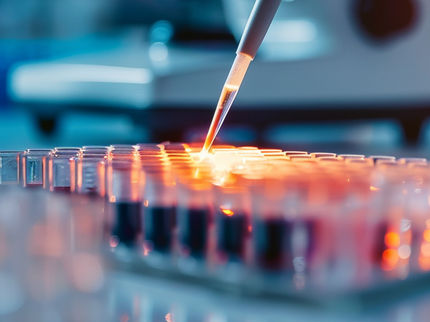Scientists create 'Chemical gardens' that can be used as bone substitute materials
Advertisement
A new way of making bone-replacement materials that allows for cells to grow around and inside them has been developed by researchers at the University of Birmingham.
The team adopted a novel approach called chemobrionics, in which chemical components are controllably driven to react together in specific ways, enabling the self-assembly of intricate bio-inspired structures.
Scientists first observed these life-like 'chemical gardens' several hundred years ago, but recent renewed interest in the field of chemobrionics has seen researchers using these techniques to design new materials at the micro- and nanoscale.
The Birmingham researchers set out to explore whether chemobrionics could also be harnessed for biotechnological applications.
Lead author Erik Hughes, of the School of Chemical Engineering at the University of Birmingham, explains "We set out to investigate if chemobrionics could be used to form architectures that are chemically and structurally similar to human bone. Once a method of generating such structures is established, the natural next step forward is to evaluate if chemobrionic materials can provide ideal frameworks for bone regeneration."
The team used a calcium-loaded gel layered under a phosphate solution, and succeeded in growing long microscale hollow tubes of hydroxyapatite material that is similar in composition to natural bone. Hydroxyapatite is commonly used as a bone substitute material, but it is typically manufactured as a powder or as a hard block, which then needs to be shaped with further processing.
The individual structures grown by the Birmingham team are approximately as thick as a strand of human hair. These tubes possess distinctive features, including porous surfaces that promote interactions with cells. Published in RSC Biomaterials Science, the study demonstrates the similarity of the tubes to many of the structures found in bone tissue, such as osteons - long cylindrical channels in bone that house blood vessels.
"We can find lots of examples of chemobrionic principles at work in nature," explains Erik. "For example, on the ocean floor, we see hot mineral-rich fluids emitted from hydrothermal vents that react with the cool seawater to form chimney-like structures. We are exploiting these same mechanisms to make these new structures for applications in regenerative medicine."
The team have tested the ability of the tubes to support cell attachment, viability and growth in the laboratory using stem cells. They were able to show extensive spreading of the cells upon and extending within the tubes after only 48 hours, indicating favourable cell-material interactions.
"Using chemobrionics to produce materials that are biocompatible is a relatively new approach, but we are really excited by its potential," says co-first author Miruna Chipara, who is also based in the School of Chemical Engineering at the University of Birmingham. "In particular, the way these structures promote cellular integration means they could be widely useful for bone regeneration".
The next steps for the researchers include carrying out further tests to demonstrate the properties of the tubular materials and how they may be modified to improve tissue regeneration. The researchers are hopeful that their work will lead to the development of a new class of chemobrionic bone substitute materials.




























































